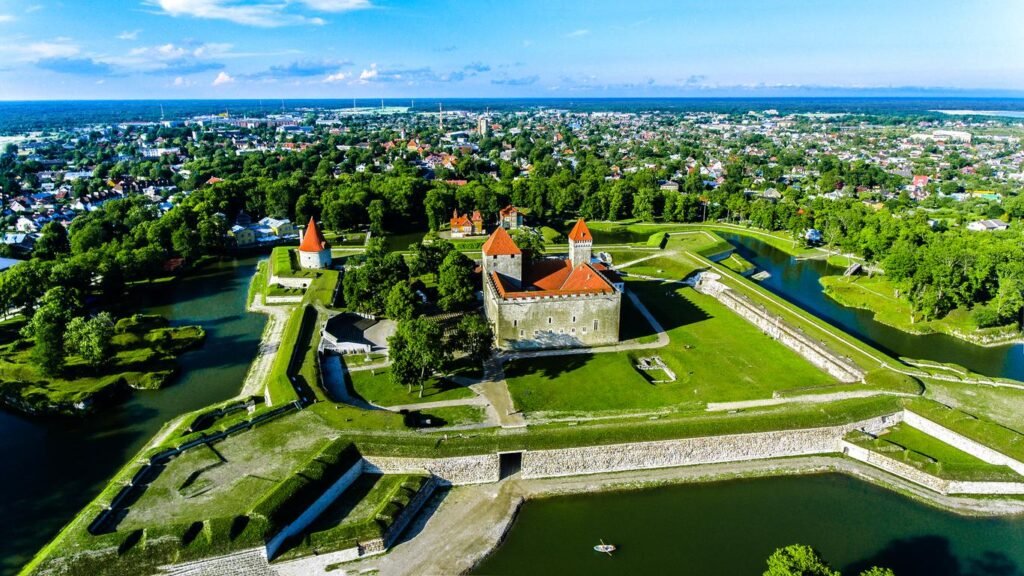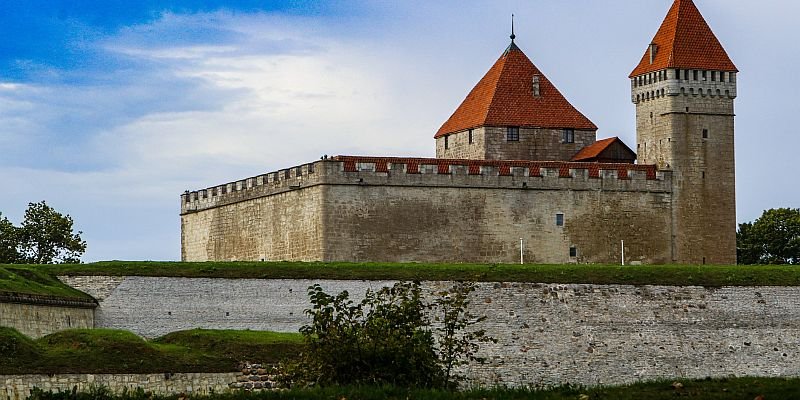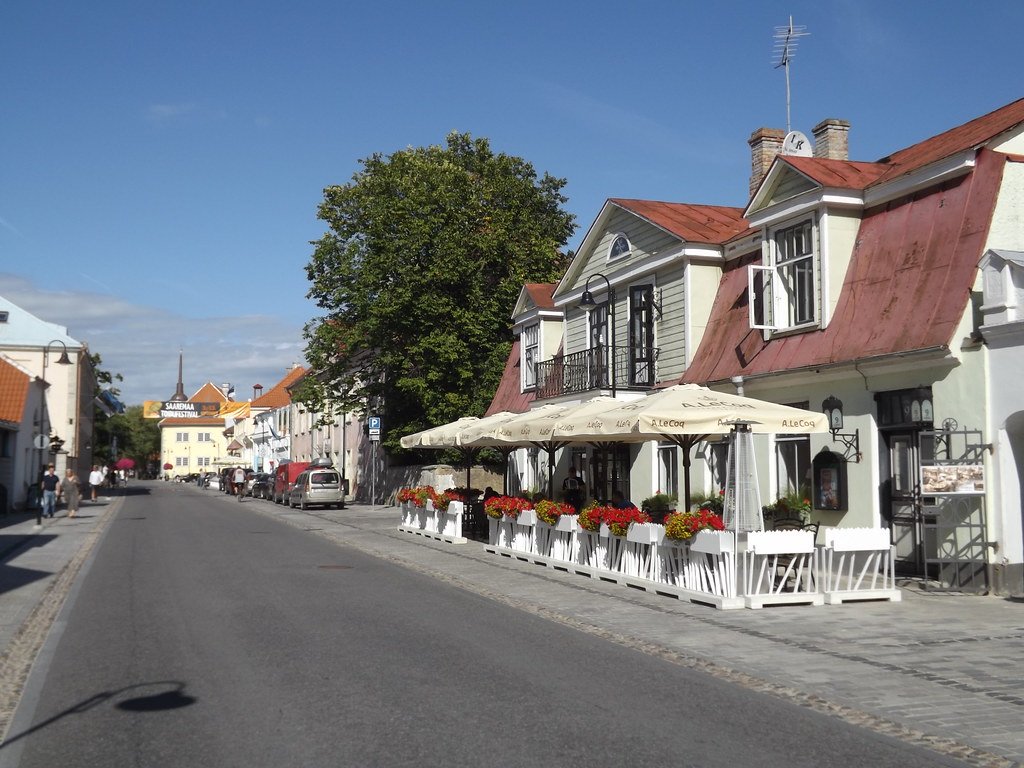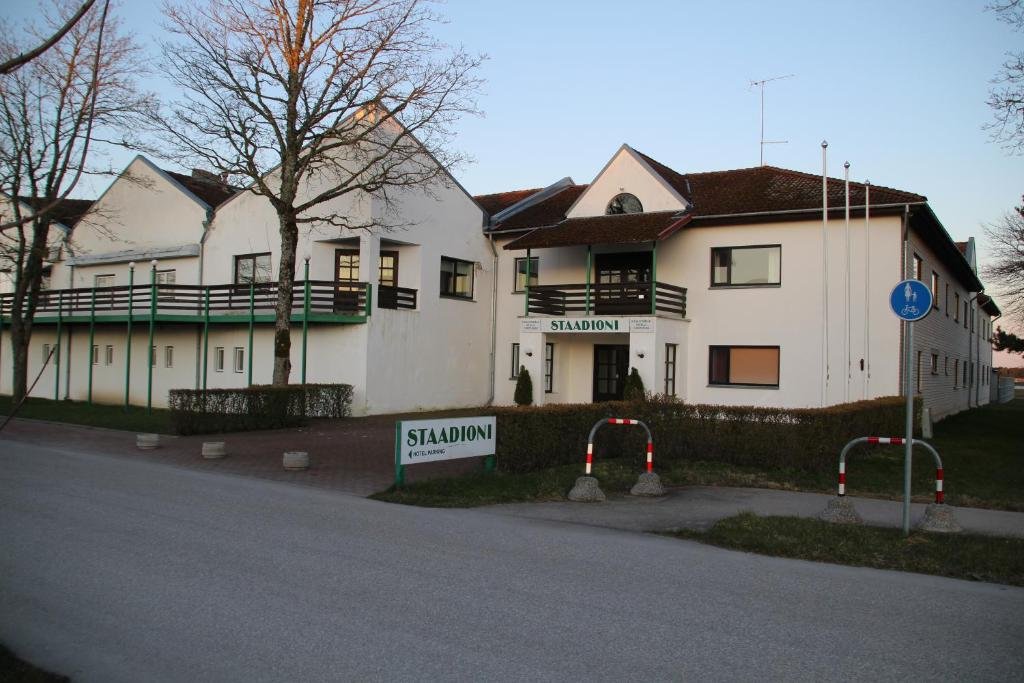Kuressaare Estonia city and municipality on the island of Saaremaa, located on the shore of the Gulf of Riga of the Baltic Sea, with the Põduste River flowing through it. It is the capital of the Saare province. The city has an old town and a bishop’s castle. The beginnings of the town are associated with the construction of the castle of the Ösel bishops.

- The main attraction of Kuressaare is the bishop’s castle (piiskopilinnus) from the 13th century. The castle originally had 4 bastions and 3 watchtowers, defended by earthen ramparts and a deep moat. It was not until the 14th and 15th centuries that powerful defensive walls were built using dolomite blocks, over 20 m high and 3 m thick. From 1645 it was owned by Denmark, later it came under Swedish rule. During the Great Northern War it was destroyed by fire. After reconstruction (1762) it acquired its current form with an inner square courtyard (42.5 x 42.5 m) surrounded by cloisters. At the north-eastern façade you can see the entrance gate and two towers on either side: a smaller one called Sturvold and a larger 29-meter Pikk Herman (Long Herman). On the ground floor there were once utility rooms, while on the upper floors there were residential rooms and representative halls. Some of them house the Saaremaa Museum, which illustrates the history of the island. During the season, the castle is a venue for various exhibitions and classical music concerts. Nearby is the Spa House (kuurhoone) from 1889, renovated 12 years ago. The park surrounding it (1861) is full of wooden villas and guesthouses in the style of Baltic resorts from the turn of the 19th and 20th centuries. In one of the alleys, you can visit a branch of the museum with an archive and a library.

- Lossi Street, lined with classicist houses, leads from the park towards the Old Town and Keskvaljak. The main building of the square – the town hall (raekoda) – was built on the initiative of the Swedish governor of the island, Magnus Gabriel de la Gardie (1654-1670). After a fire, the town hall was rebuilt and modernised (in 1780-1787), as a result of which today it represents the northern baroque. It is not an impressive building, rather simple and austere, but at least functional. However, it is worth paying attention to the arched portal with a Latin inscription and the city’s coat of arms, guarded by two stone lions. The interior of the town hall houses the city gallery, tourist information point and registry office. Opposite is the 17th-century Scales House (vaekoda) with a Baroque pediment and a figurine on top, and a little further on is a picturesque market (turg), where you can stock up on souvenirs and handicrafts from all over the island. The square is decorated with an obelisk in honour of those who died fighting for Estonian freedom, carved by Amandus Adamson. Erected in 1928, then dismantled by the Russians, it was returned to its place only in 1990.

- At the intersection of Tallinna and Tomi streets, the Evangelical Laurentiuse kirik (St. Laurence’s Church) from the 17th century, rebuilt in the classicist style in 1835, stands. The red granite baptismal font comes from Ansekula on the Sørve peninsula and is the work of Gotland artists. Near the church, you can see a long, bright building – this is the former court (1789), which once housed the tax office, police station and criminal detention center, and today border guard stations and customs. It is worth going to Turu Street, where you can see a historic pharmacy (1680), one of the oldest in the country, and to Komandandi Street, where at no. 9 stands the interesting house of vice-governor Campenhausen. On the north-eastern edge of the city, 3 km from the center, there is the Kudjape cemetery, founded in 1778. Attention is drawn to numerous tomb chapels in the classicist style, crypts with massive plaques and columns carved in the Sarem dolomite. Kudjape is a place closely connected with the history of this part of Estonia. It is primarily the resting place of people who made great contributions to the island.

- Accommodation, lodging, hotel: Johan Design & SPA Hotel 4-star hotel, Ekesparre Boutique Hotel, Kuursaal Guesthouse, Staadioni Hotel.

